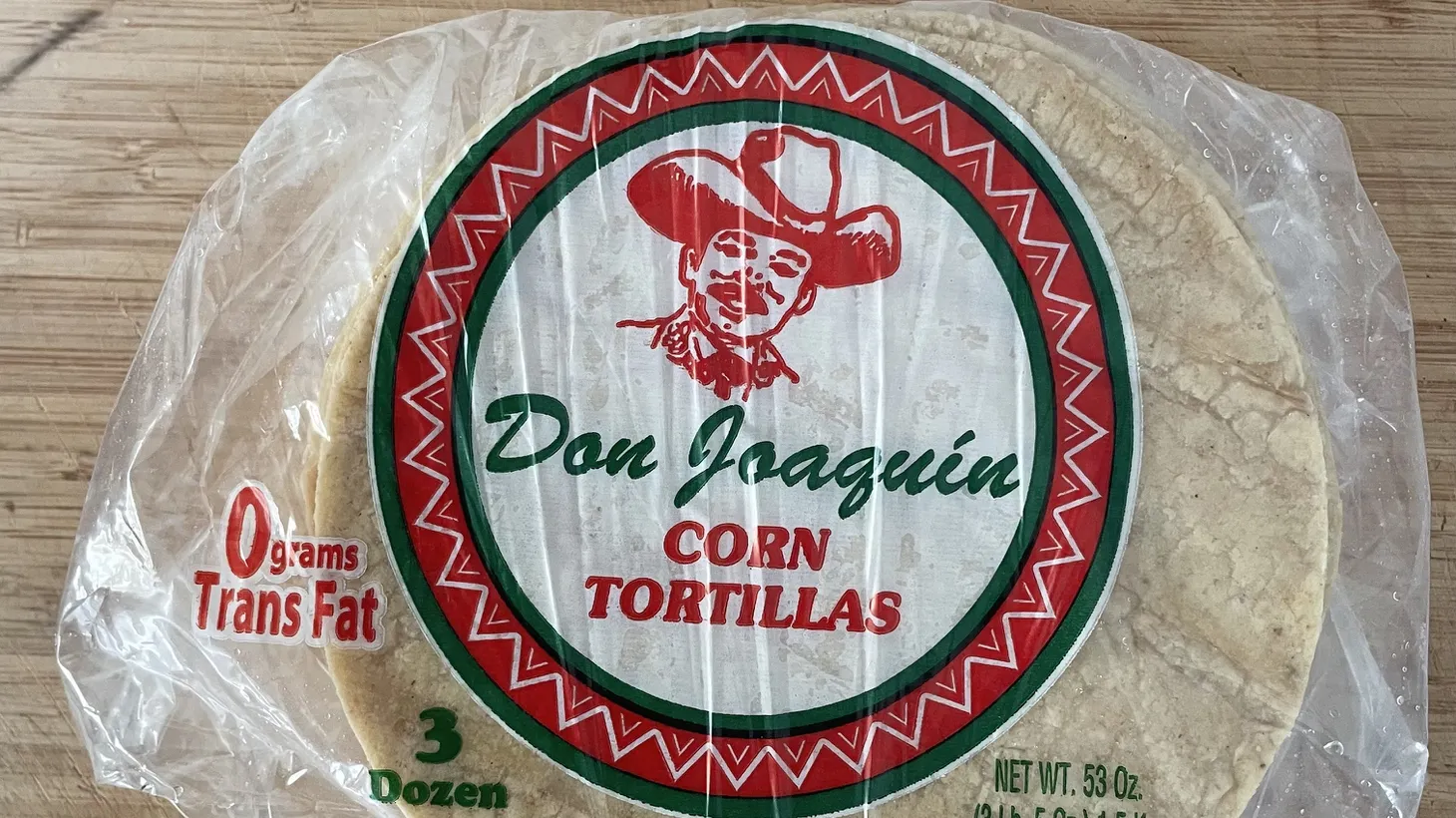Hang out in the food-geeky corners of the internet and you are liable to find fan pages devoted to vintage corn chip bags and their very retro graphics: bright cellophane packages bearing smiling suns or blocky 1970s prints. You can not only acquire a ‘50s-era Frito bag on eBay for $39.99, but the design of the Doritos bag is the subject of regular design scrutiny online.
The tortilla bag gets no such love. Generally a utilitarian affair made out of a soft poly plastic, the bags are generally clear — to reveal their contents and maybe a few beads of steam if their contents are fresh.
In its most basic form, the packaging will feature only a slip of paper inserted among the tortillas to indicate brand and nutritional value. Though most packages these days feature some sort of graphic stamp — generally involving Indigenous pattern, the colors of the Mexican flag or an image of a woman, since tortillas are associated with female labor. The advent of boutique tortillas that cater to the foodie set has begun to up the ante on package design. Brands like Yoli out of Kansas City and Pete’s Tortillas in Austin feature bold graphics and stylish fonts (the latter, bearing a sort of label you might find on a craft brew).
But the most effective designs in my mind are ones that, like the best tortillas, feel homemade: bearing imperfections, yet full of panache, with a well-rounded quality that evokes a certain tortilla-ness.
Let’s have a look at some of the candidates entered in this year’s #TortillaTournament:
El Molino de Oro
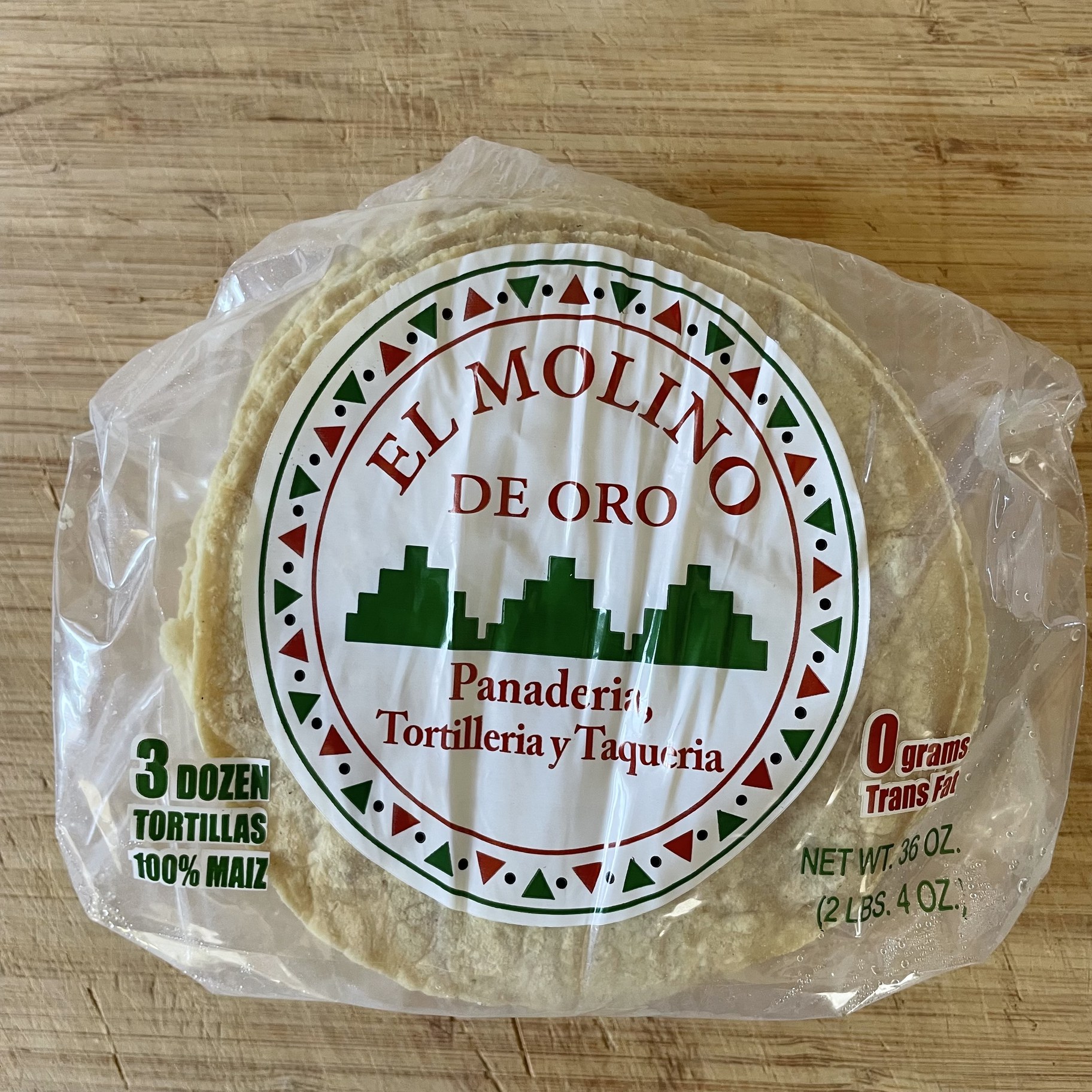
The El Molino de Oro bag is “all about the basics.” Photo courtesy of Gustavo Arellano.
This bag is all about the basics: Indigenous-style patterns are rendered in red and green on a white background and the brand’s name is presented in an unfussy serifed font. It’s all about the tortilla, whose golden color is revealed just beyond the disc-shaped logo’s edges. It’s the sort of design that conveys a workaday tortilla, the kind that goes from breakfast taco to dinner taco with just a quick change of a filling.
Sawaya Brothers Jr.
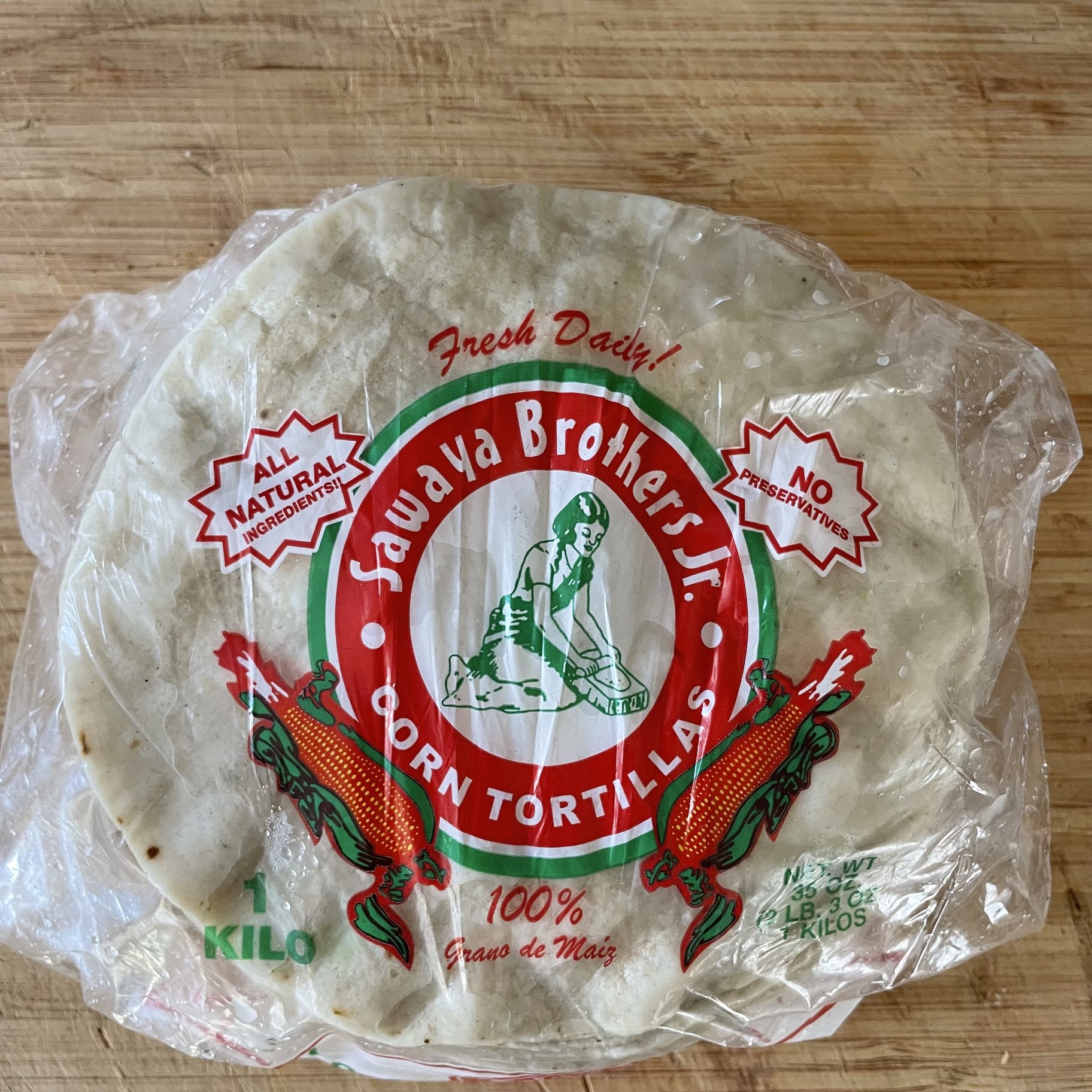
Sawaya Brothers Jr.’s package design employs traditional colors and visual tropes. Photo courtesy of Gustavo Arellano.
The Sawaya Brothers design employs the traditional color palette and some of the common visual tropes of tortilla bags, such as a woman grinding corn. But it pumps up the volume with some deeply saturated reds and dramatically placed corn cobs that give the design depth and the feel of a royal family crest. Extra points for all the different fonts. It’s a package that says, “Hi, we’re tortillas, and we’re a little bit extra.”
Dios de Maíz Yun Katz
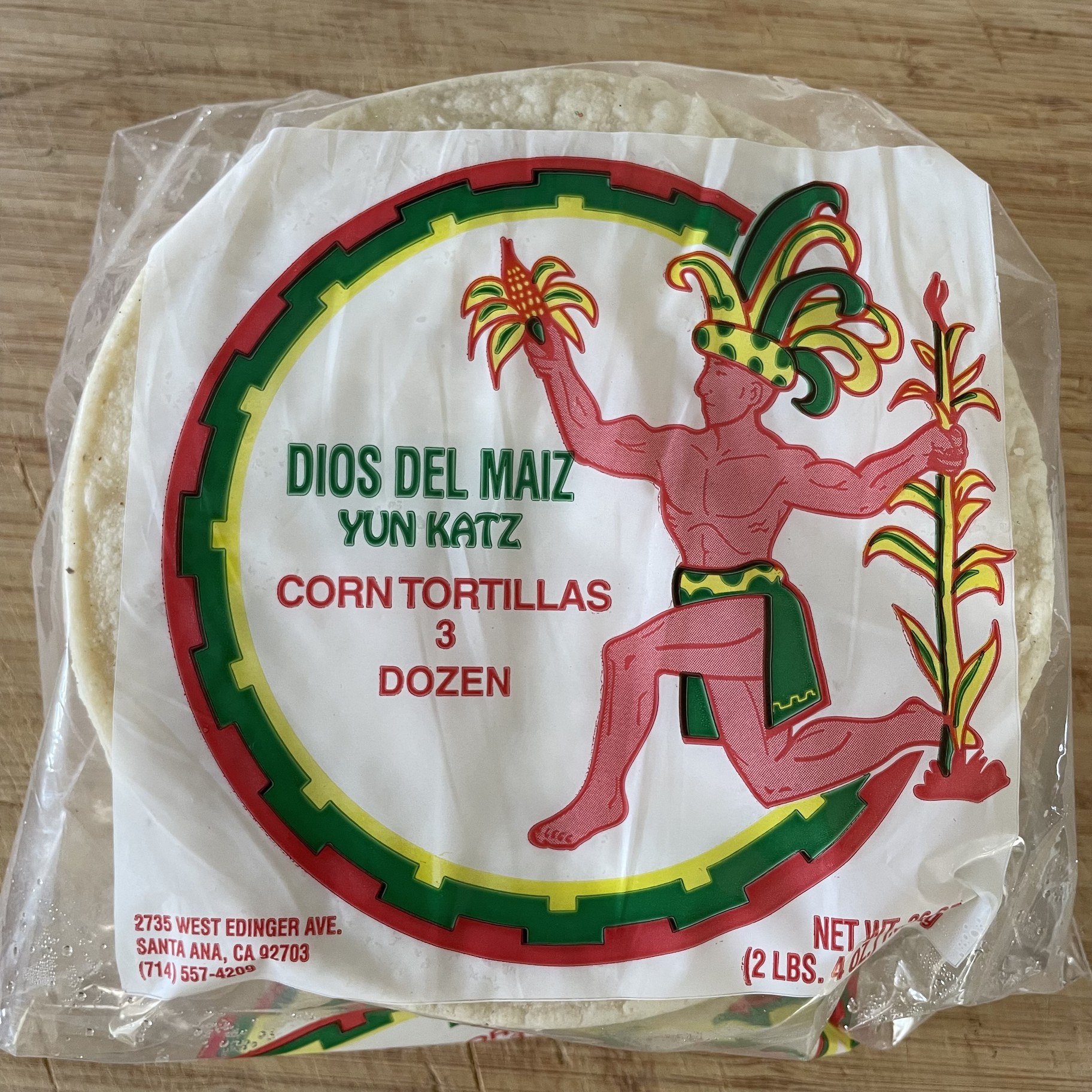
The package for Dios de Maíz Yun Katz includes a nod to an important Mayan deity. Photo courtesy of Gustavo Arellano.
The design is basic — in the form of a circle, with simple fonts — but it goes otherworldly with a nod to an important Mayan deity. Yum Kaax (transliterated here as Yun Katz), is a Yucatec figure who serves as guardian of the forest and wildlife and is frequently associated with maize and agriculture. 10/10 — would make a tortilla offering to any dancing god that holds the power to both protect and destroy.
Vons Flour Tortillas
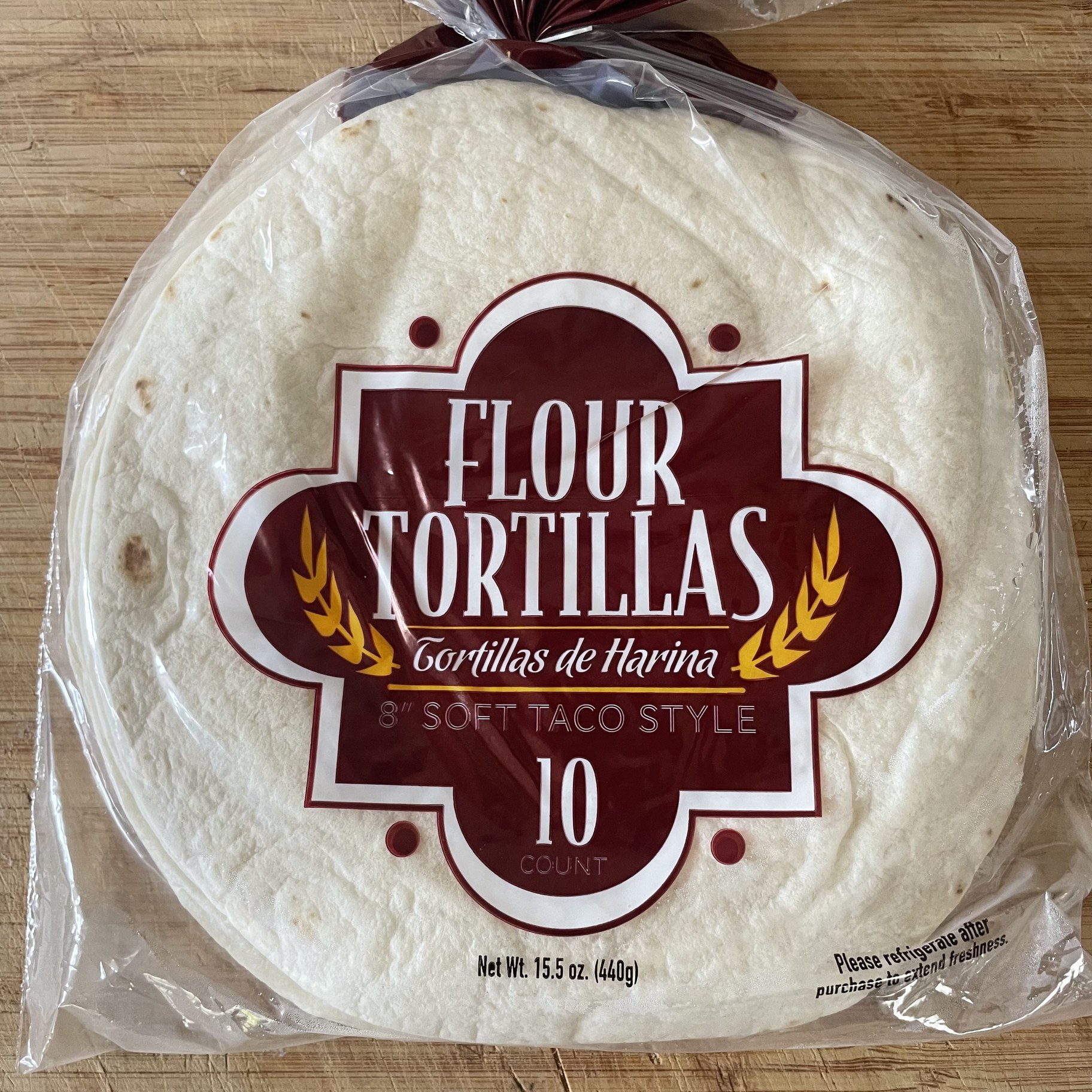
The Vons design “could have only emerged from a corporate office.” Photo courtesy of Gustavo Arellano.
This is the sort of willfully plain design that could have only emerged from a corporate office still stuck in ‘80s country kitchen graphics. The brown crest gives it a baroque Spanish farmhouse vibe (if you close one eye and hold it at arm’s length) and the blades of wheat convey that this tortilla is all about the flour. But there is nothing about this that feels truly Mexican. It’s all well and good to try something different. But so far no supermarket (sorry, Vons) has beaten the graphic punch of Ralphs’ ‘80s-era plain wrap.
HomeState
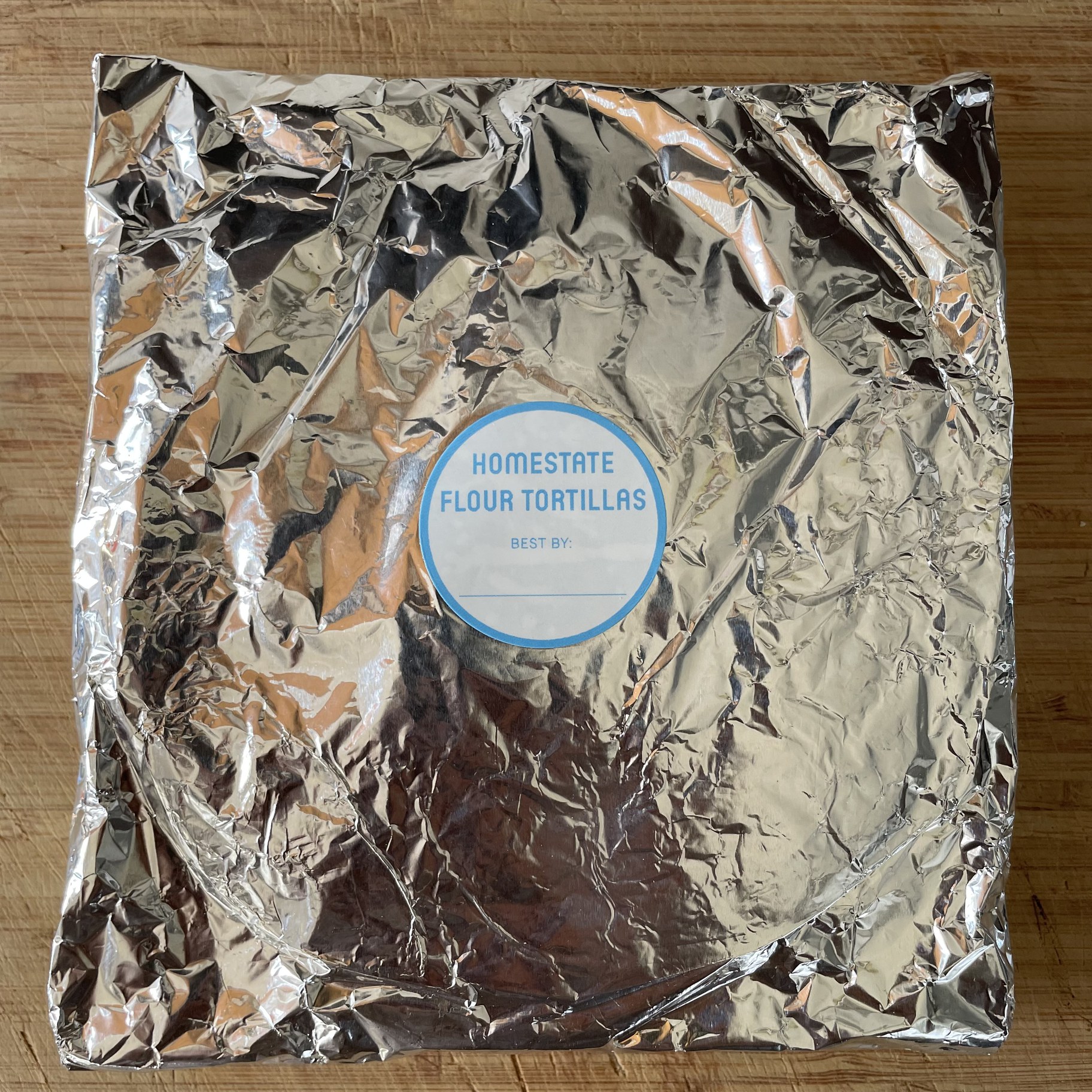
HomeState’s foil-wrapped tortillas are meant to be eaten as soon as possible. Photo courtesy of Gustavo Arellano.
In Mexico’s old-school tortillerías, tortillas are sold by the dozen and wrapped in plain paper, to be eaten as soon as possible — preferably, while walking home. HomeState takes that idea and pumps it up a notch by employing foil (more protective), which also channels a “I just scored some leftovers at the family carne asada” aesthetic. A simple stickered brand logo with a non serif font adds a touch of millennial hip and conveys that these tortillas are most certainly non-GMO.
Zamora Bros.
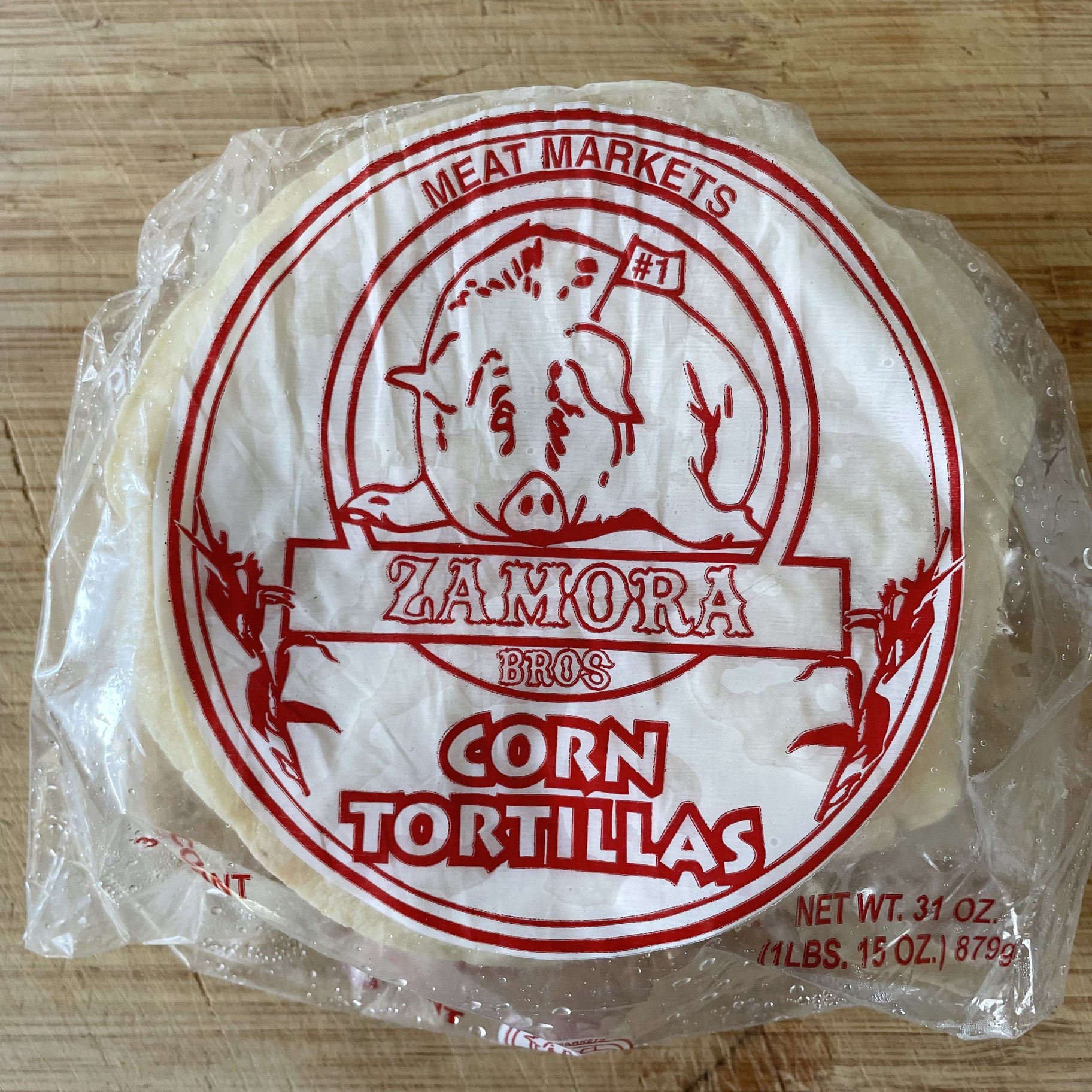
The Zamora Bros. keep the palette simple with a basic red monochrome. Photo courtesy of Gustavo Arellano.
I’m here for any logo that looks like it was created on Microsoft Paint. The Zamora Bros. keep the palette simple with a basic red monochrome, but add drama with the image of the pig, who looks like he’s on his way to becoming carnitas. It’s the sort of packaging that tells me that these are the types of tortillas that are perfect with butter, salt and a squeeze of lime, served in a darkened kitchen late at night.

